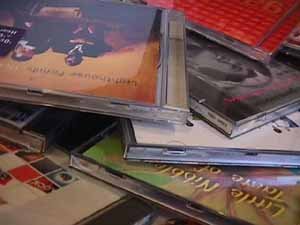Understanding bits and bytes
With 8 bits, we have 28= 256 possibilities (each bit can be zero or one, and the possibilities multiply together). We call 8 bits a byte. The very common ASCII system makes each letter of the alphabet, both capital and small (plus punctuation and some other symbols) correspond to a number from 0 to 255 (for example a=97, b= 98 and so on), so one letter can be expressed with one byte.
Thus the word "Shannon" takes 7 bytes. A page of a book (with 50 characters per line, 50 lines per page) takes 2,500 bytes, so a 400 page book takes 1,000,000 bytes. As with metres and kilometres, we need some new units, or we'd need a lot of zeroes! Hence we write that a page is approximately 2.5KB, and a book is approximately 1 MB (something strange happens here in that KB ("kilobyte") = 1,024 = 210 bytes, not 1000 as you might expect). It's easiest to keep track of things with powers of 2 like this. The next largest unit is 1MB ("megabyte") = 1,048,576 = 220 bytes, and then 1GB ("gigabyte") = 230 bytes.

Bits and bytes
Image from DHD photo gallery
Computers often represent a pixel of colour with 3 bytes. This is like mixing paint - the amount of red in the mixture varies from 0 to 255, the amount of green varies from 0 to 255, the amount of blue from 0 to 255. A computer monitor showing  pixels therefore needs
pixels therefore needs  bytes - more than a whole book - just to fill the screen. A picture really is worth more than a thousand words!
bytes - more than a whole book - just to fill the screen. A picture really is worth more than a thousand words!
As for a movie, we need  pictures per hour (60 minutes per hour, 60 seconds per minute, 24 frames per second). That is, we’d need
pictures per hour (60 minutes per hour, 60 seconds per minute, 24 frames per second). That is, we’d need  bytes or
bytes or  to store an hour of film.
to store an hour of film.
A CD-R can typically store about 700MB, a DVD can store about 4GB. It's clear we have to do something clever (that is, data compression) to fit a movie on a disc.